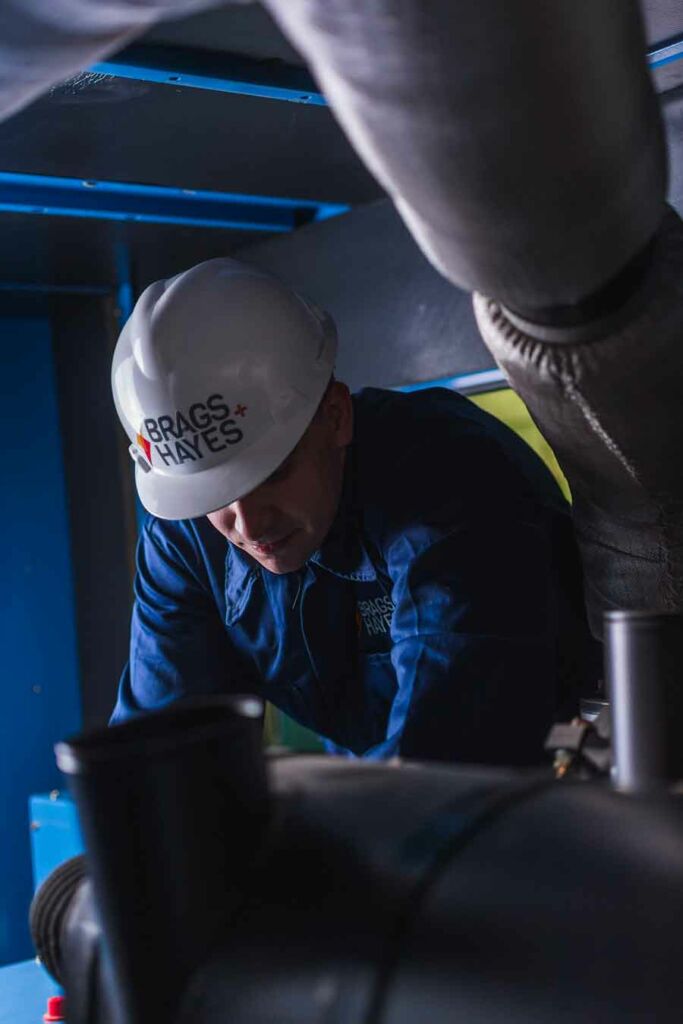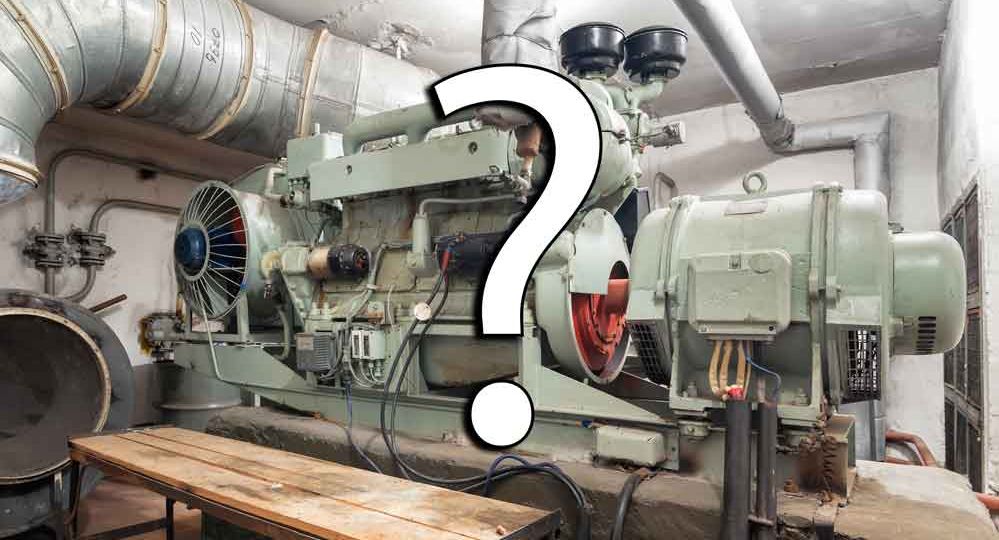The quintessential power generator extends beyond the sparking confines of electricity during power outages. It serves as a symbol of resilience and preparation, ensuring that home and business functions don’t falter when electrical access does. With such pivotal roles, one should not underestimate the cleaning needs of power generators. These are the silent, steadfast instruments that uphold our modern conveniences during the unanticipated energy crisis.
In the next post we will analyze in detail why it is important to periodically clean an energy generator and we will give details of how to carry out a cleaning procedure correctly.

Recognizing that our technologically driven world relies on power, it becomes imperative to understand why we must ensure that our power generator remains in peak-condition through regular cleaning and maintenance. Why is it important to understand this? A power generator is more than a backup during outages; it supports daily operations, safeguards essential equipment, and sustains comfort during harsh conditions.
From an operational perspective, efficiency and performance are fundamental. A clean generator operates at its optimum output capacity, unrestrained by accumulated grime or debris. By safeguarding the generator’s inner workings, we ensure heightened performance and efficiency which, in turn, brightly illuminates our living spaces or revives our vital appliances.
In addition, the lifespan of machinery is inevitably bound to its care and upkeep. For a power generator, longevity is directly correlated to the conscientiousness of its maintenance regime. Regular cleaning thwarts the insidious effects of internal corrosion and the encroachments of elemental wear-and-tear.
Finally, when unruly power outages strike, the assurance of electricity can provide a substantial safety fortress, predominantly in healthcare and business environments where sustained power is a matter of life-death or profit-loss. Therefore, maintaining your power generator is not just about mechanics and maintenance, it’s a deliberate step towards safety and preparedness. To ignore the cleaning needs of your power generator could be flirting with grave consequences.
Thus, understanding the ‘Why’ is paramount before you unpack your cleaning toolkit. It’s not just about dusting off the outward dirt, but rather an effort to ensure efficiency and performance, foster longevity, and uphold safety. Regular upkeep of your power generator isn’t just maintaining a piece of machinery, it’s preserving an important lifeline.
Understanding the 'How' to clean a power generator
As responsible custodians of power generation technology, adhering to the procedure of a systematic cleaning regime becomes essential. Surrounding the ‘how,’ beginning with paramount safety precautions, disconnect any power source and engage in correct protective gear. Identifying the type of generator is integral to determining the pursuing steps, intertwined with the appropriate cleaning supplies that you’ll fathom with your generator manual’s help.
Step-by-step Cleaning Guide for your power generator

1. Disconnecting Power Source.
Before you begin cleaning your power generator, for your safety, remove all charging connections from the power generator.
2. Cleaning the Exterior.
The exterior cleanliness of your power generator presents itself as the first defense line against contaminants. Opt for a soft, non-abrasive cloth with non-flammable degreaser cleansing agent to effortlessly sweep away the layers of dust and detritus from the generator’s exterior. Engage the use of a soft-bristled implement, akin to a toothbrush, as your aid for banishing stubborn dust particles and remnants of fuel residue around crevices and openings. Employing a air compressor serves as an effective strategy to shuttle dust accumulations and minute debris from the vents. For an important safety note, steer clear from using combustible cleaning solutions on any segment of the generator. The remnant traces could incite a blazing accident once the generator start.
3. Leak Inspection.
Post exterior cleanup, scout for any oil or fuel leaks that might originate from loosened components. A firm fastening or replacement of the leak sources is recommended.
4. Oil Examination.
Ensure a thorough examination of your generator’s oil before each use. After your generator’s initial 20 hours of use, plan an oil change to rid the system of residues that may have dislodged during the engine’s break-in phase. Following this, frequent oil changes every 100 hours, more often in dirt-prone conditions, will help maintain the engine’s health.
5. Servicing the Air Filter.
Next, servicing the air filter involves cleaning or replacing it—consult your generator manual to correctly handle the filter without causing damage.
A clean air filter guarantees smooth generator function and, consequently, its longevity. Just like us, your generator also requires clean air for optimal functioning. Regular air filter checks and cleaning, especially after dusty conditions or oil changes, are critical. Generator air filter cleanliness preserves its lifecycle and reveals potential maintenance issues.
6. Inspecting and Cleaning the Spark Plug.
Spark plugs are crucial for ensuring a smooth-running generator engine. Over time, these can become dirtied with oil and carbon buildup, preventing ignition. Regularly check and clean plugs along with oil changes. Should the porcelain crack, replace immediately.
7. Strainer Cleanup.
The fuel strainer present in the fuel fill port serves to collect sediment that might be in the fuel. Clean this strainer when sediment presence is noticeable.
8. Fuel System Maintenance.
The fuel system’s maintenance touches on the heart of your generator. An appropriate fuel stabilizer can prevent it from producing stale gas during dormancy.
9. Battery Maintenance.
Battery maintenance mustn’t be overlooked. Regularly clean the battery compartment, check for leaks or bulges, and ensure the connection is corrosion-free..
10. Checking and Managing the Cooling System.
The cooling system plays a crucial role in prolonging the generator’s life. Check the coolant level regularly and top it up if necessary.
If the coolant liquid is dirty, flush the liquid and replace it with a new one with the characteristics recommended by the manufacturer in the user manual.
11. Handling Generator’s Oil.
Regularly change your generator’s oil as per your manufacturer’s instructions. Remember that your generator requires periodic engine oil changes because with use and time it loses its optimal properties.

Professional cleaning and maintenance.
Occasionally, one might require an expert touch to sustain the generator’s fitness. Knowing when to call professional help and choosing a trustworthy service provider are critical to ensuring a high performing power generator.
Don’t hesitate to reach out for any further information or assistance regarding to professional cleaning and maintenance. Contact us at the phone number +1.954.657.7777, or write to us at info@bnhgenerators.com, and we will gladly help you.
Generator Hibernation
After diligent cleaning, maintenance, and operation across a whole season, perhaps it’s time to grant your generator a brief hiatus until its next duty call. Ensure it remains in standby readiness for the following period of need. These steps will help in adequate preparation before storage:
Battery Care: Kick-start the process with battery removal. Next, use a wire brush to bristle away any debris or oxidations sullying the posts. Conclude with a full battery charge.
Fuel Drainage: If you foresee a rest period of over 30 days for your generator, consider draining the fuel tank completely. This deters fuel deterioration during its inactive tenure. Though there are fuel-life prolongation additives available, a comprehensive fuel drain is advisable during extended periods of generator dormancy.
Spark Plug TLC: Dislodge the spark plug and introduce a modest amount of oil into the plug hole. This enchants corrosion resistance and sustains bore lubrication.
Storage Spot: Locate a dry shelter for your generator’s storage and shroud it for protection against dust.
Regular Checks: If you decide storing your generator, ensure regular periodic startups (every month or two). This regime keeps it aptly lubricated and reaffirms its readiness for whenever power shortage strikes. Using a fuel additive or stabilizer can efficiently discourage the gasoline or diesel from premature degradation.
A clean power generator is equivalent to a well-maintained power fortress; it is critical for efficiency, longevity, and safety. Regular cleaning and maintenance are vital to ensure that your resilient partner in power management remains as steadfast and reliable as ever. Remember, an efficient power generator is the byproduct of consistent cleaning, regular scrutiny under trained hands, and robust operational care. Therefore, roll up your sleeves and clean, for a clean generator indeed is a power powerhouse.
And again we remind you that don’t hesitate to reach out for any further information or assistance regarding to professional cleaning and maintenance. Contact us at the phone number +1.954.657.7777, or write to us at info@bnhgenerators.com, and we will gladly help you.


